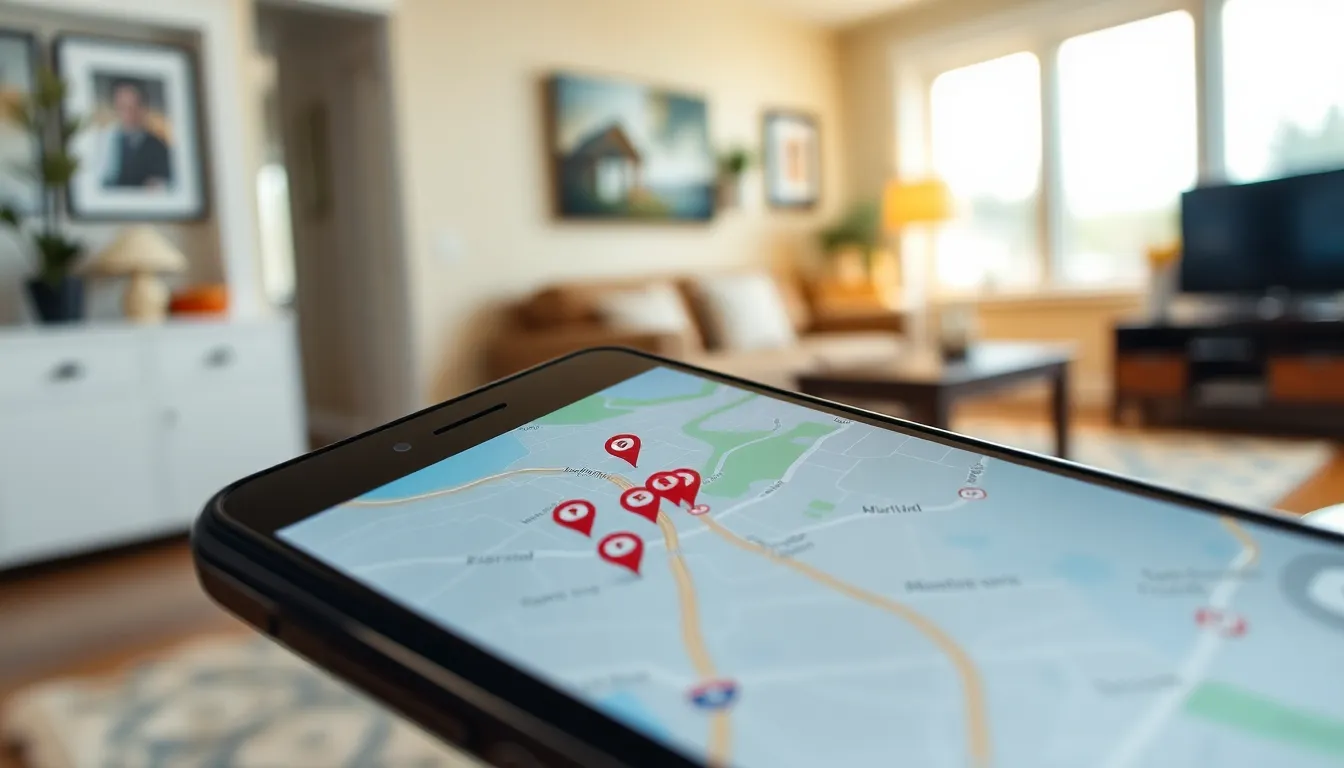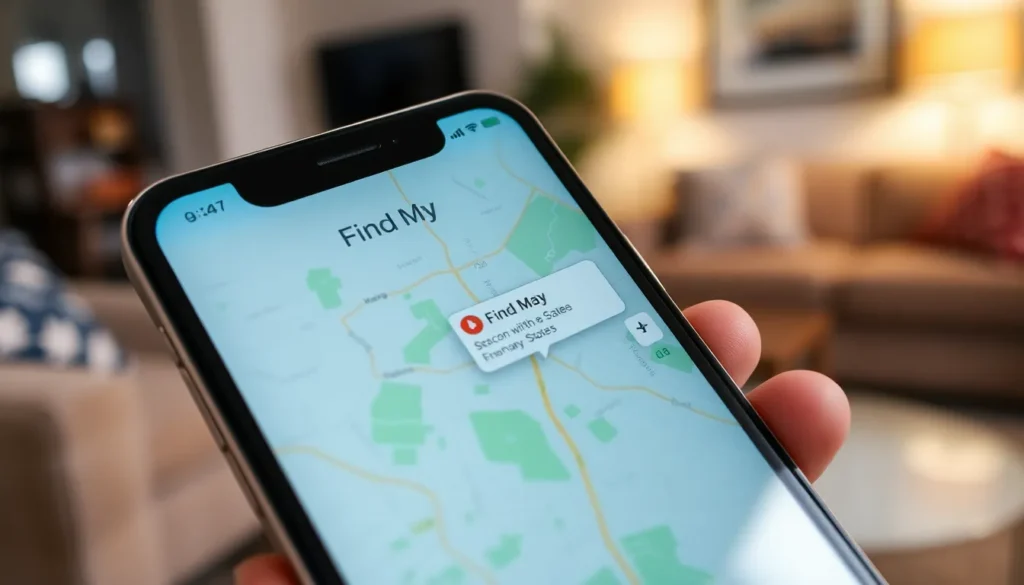Table of Contents
ToggleIn a world where sharing your location can feel like a modern-day trust exercise, what happens when that map suddenly goes blank? If you’ve ever found yourself staring at your iPhone, wondering why your friend’s little blue dot has vanished, you’re not alone. Whether it’s a sneaky way to avoid a dinner invite or just a tech glitch, figuring out if someone stopped sharing their location can be a real head-scratcher.
Understanding Location Sharing on iPhone
Location sharing on iPhone enables users to share their real-time location with friends and family through the Find My app. Users can choose to share their location for a specific duration or indefinitely. Notifications appear when location sharing is turned on, providing transparency in the sharing process.
Checking the location-sharing status of a contact requires specific steps. Open the Find My app, tap on the “People” tab, and see the list of individuals sharing their location. An absence of a friend’s location indicates that they may have stopped sharing.
Changes in shared locations can also result from technical issues. If a friend’s device is offline or location services are disabled, their location may not appear. Signal loss in low connectivity areas could also impact location visibility.
Friends can modify their location-sharing preferences at any time. They can opt to pause sharing entirely or restrict access to certain contacts. In such cases, the other party may receive a notification indicating the change.
Privacy settings also play a crucial role in location sharing. Users can customize settings to limit who views their location. If a person decides to stop sharing their location, they can easily adjust these settings in the app.
Understanding these aspects helps manage expectations when using location sharing features. Clarity in these functions ensures users remain informed about their connections and settings.
Signs That Location Sharing Has Stopped

Determining whether someone has stopped sharing their location can be straightforward. Several indicators often reveal this situation.
No Updates in Location
An absence of location updates serves as a primary sign. If a person you followed no longer appears on the map, it raises questions. First, check timestamps on their last known location. If it hasn’t changed for an extended period, sharing may have ceased. Their device might remain offline or location services might be disabled. Such factors could complicate visibility. Friends can also decide to temporarily stop sharing due to personal reasons or improvements to privacy.
Notification Alerts
Notification alerts can clarify location-sharing changes. If someone stops sharing without explanation, indicators may manifest in the Find My app. Notifications usually inform users when a friend begins or ends location sharing. Users should check alerts carefully. When a sudden disappearance occurs without a notification, it might suggest a deliberate choice. Consistently monitoring notifications can enhance awareness about changes in location-sharing status. Remember, these alerts can vary depending on privacy settings and user preferences.
Checking Location Sharing Settings
Knowing how to check location sharing settings helps clarify if someone stopped sharing their location. Users can use the Find My app and review privacy settings to gain insight into location-sharing status.
Using Find My App
Open the Find My app on the iPhone. Tap on the “People” tab to see a list of contacts sharing their location with you. If a friend’s location isn’t visible, it indicates they may have stopped sharing. Checking the contact’s name will help confirm their sharing status; a message may appear stating that location sharing is not available. This app includes alerts notifying users when someone starts or stops sharing their location, providing transparency about any changes.
Reviewing Privacy Settings
Access privacy settings to ensure they align with location-sharing preferences. Navigate to Settings, select Privacy, then choose Location Services. This section shows which apps have access to location information. Users can also check if any restrictions are placed on location sharing by tapping on the specific contact within the Find My app. If there’s a lack of location updates, it can suggest that friends modified their settings, impacting visibility.
Communication With the Contact
Confirming a friend’s location sharing status may involve open dialogue. Directly addressing concerns can often clarify any uncertainties.
Directly Asking the Person
Reaching out to the individual is the most straightforward approach. She can send a message, asking if they’ve opted to stop sharing their location. A simple inquiry not only promotes transparency but also demonstrates care for the friendship. If he feels comfortable, having this conversation can strengthen their bond and provide the needed clarity regarding their situation.
Alternative Ways to Confirm
Checking for changes in their status without direct conversation can also be effective. Observing changes in notification patterns may indicate a shift in sharing preferences. Examining the Find My app frequently helps track any updates. One might also notice if the friend’s last known location remains static over time. Engaging with mutual friends can also provide insight; they may know whether the individual has adjusted their location-sharing settings.
Understanding location-sharing dynamics on iPhones can help users navigate the uncertainties that arise when a friend’s location disappears. By utilizing the Find My app and monitoring notifications users can stay informed about changes in sharing status.
Open communication remains essential in clarifying any concerns about location-sharing preferences. Directly discussing these matters with friends can foster transparency and strengthen relationships.
Ultimately keeping an eye on privacy settings and being aware of potential technical issues ensures that users maintain control over their location-sharing experiences.







